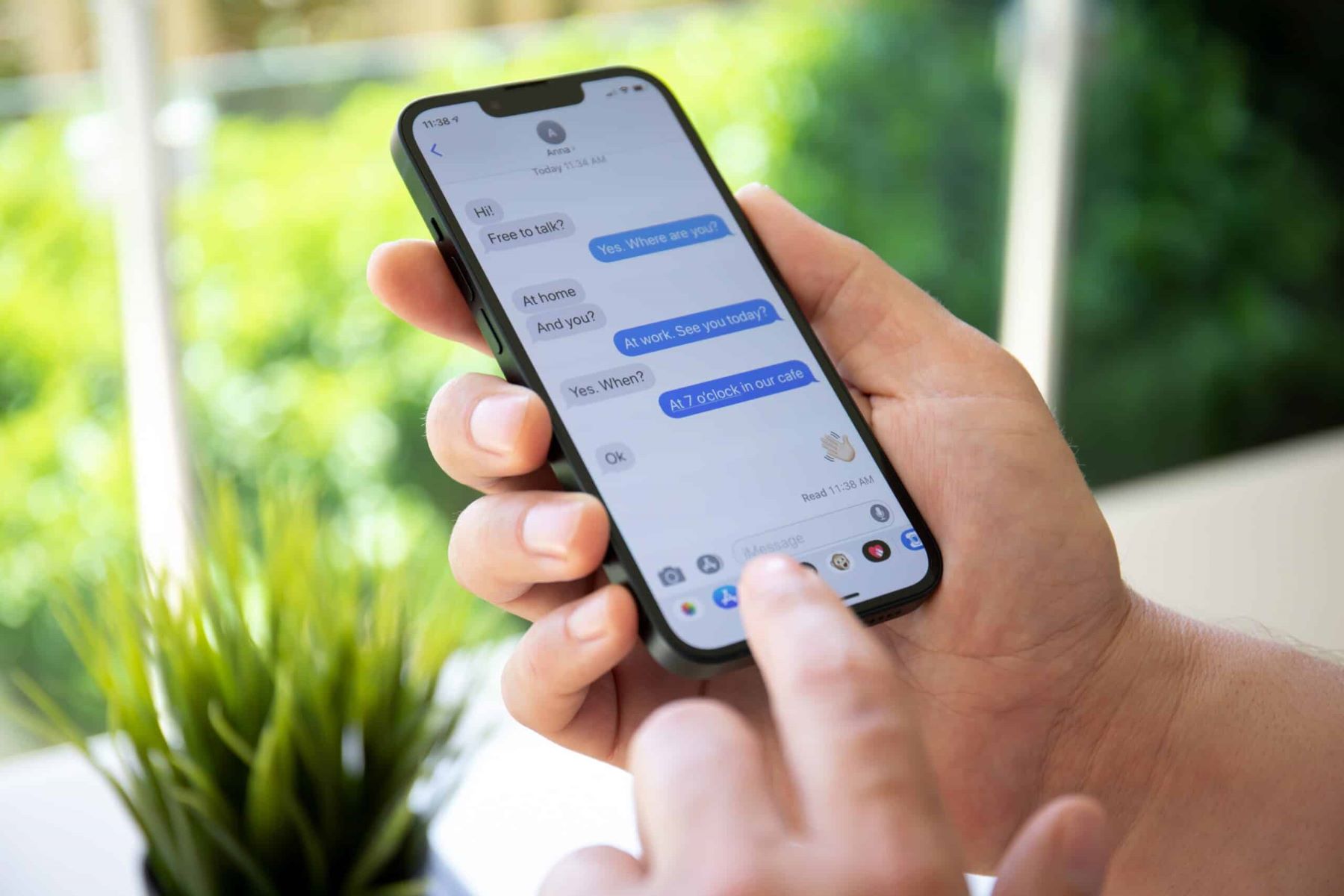Home>Technology and Computers>The Truth About WhatsApp Blocking: Can They Still See Your Status And Online Status?


Technology and Computers
The Truth About WhatsApp Blocking: Can They Still See Your Status And Online Status?
Published: February 6, 2024
Learn the truth about WhatsApp blocking and whether your status and online status are still visible. Get the latest insights on technology and computers.
(Many of the links in this article redirect to a specific reviewed product. Your purchase of these products through affiliate links helps to generate commission for Regretless.com, at no extra cost. Learn more)
Table of Contents
Introduction
WhatsApp has become an integral part of our daily communication, allowing us to stay connected with friends, family, and colleagues across the globe. However, amidst its convenience and popularity, users often find themselves pondering over the intricacies of privacy and visibility within the app. One common concern that arises is the issue of being blocked by a contact and the subsequent implications on privacy.
In this article, we will delve into the truth about WhatsApp blocking and address a common query that many users have: Can the person who has blocked you still see your status and online status? This question has sparked numerous discussions and debates, leading to a sense of uncertainty among WhatsApp users. By shedding light on this matter, we aim to provide clarity and empower users with the knowledge needed to navigate the intricacies of WhatsApp privacy.
Join us as we unravel the mysteries surrounding WhatsApp blocking and explore the implications it has on your visibility within the app. Let's embark on this journey to uncover the truth and equip ourselves with the understanding required to safeguard our privacy while using WhatsApp.
Understanding WhatsApp Blocking
WhatsApp blocking is a feature that allows users to restrict communication and visibility from specific contacts. When a user blocks another contact on WhatsApp, several restrictions come into play. Firstly, the blocked contact will no longer be able to send messages to the user who has blocked them. Additionally, any attempts to call the user will be futile, as the calls will not go through. This serves as a form of digital barrier, preventing unwanted communication and interactions.
From a visibility standpoint, being blocked on WhatsApp entails certain limitations. The blocked contact will no longer be able to view the blocker's "last seen" timestamp, online status, or updates to their profile picture and status. This effectively severs the visibility link between the two parties, ensuring that the blocker can maintain a level of privacy and control over their interactions within the app.
Furthermore, when a user blocks a contact on WhatsApp, the blocked individual is removed from the blocker's contact list. This means that the blocked contact will no longer appear in the blocker's list of contacts, and any existing conversations with the blocked contact will be hidden from the blocker's view. Essentially, the act of blocking on WhatsApp creates a digital divide, shielding the blocker from unwanted interactions and preserving their privacy within the app.
It is important to note that the act of blocking is reciprocal. When a user blocks a contact, the blocked individual is also unable to view the blocker's last seen timestamp, online status, or updates to their profile picture and status. This mutual restriction ensures that both parties are afforded a degree of privacy and control over their interactions on WhatsApp.
In essence, understanding WhatsApp blocking involves recognizing the multifaceted nature of its implications. It not only curtails communication but also alters the visibility dynamics between the parties involved. By comprehending the intricacies of WhatsApp blocking, users can navigate the app with a heightened awareness of their privacy and control over their interactions.
Can They Still See Your Status and Online Status?
When a contact blocks you on WhatsApp, a common concern arises regarding the visibility of your status and online status to the person who has blocked you. It is natural to wonder whether your updates, such as profile picture changes, status updates, and online status, remain visible to the individual who has implemented the block.
The truth is that when you are blocked by a contact on WhatsApp, your status and online status become concealed from the blocker. This means that any changes to your profile picture, updates to your status, and your online status will no longer be visible to the person who has blocked you. The act of blocking effectively severs the visibility link, ensuring that the blocked individual's updates and online presence are shielded from the blocker's view.
This reciprocal restriction ensures that both parties are unable to monitor each other's status and online status, fostering a sense of privacy and control over their digital interactions. The intention behind this mechanism is to provide users with a safeguard against unwanted visibility and to grant them the autonomy to manage their presence within the app.
It is important to note that this restriction extends beyond the visibility of status and online status. When a contact blocks you on WhatsApp, they are also unable to view your "last seen" timestamp, further reinforcing the privacy barrier established by the block. This comprehensive restriction serves as a protective measure, allowing users to navigate the app without apprehension regarding their visibility to blocked contacts.
In essence, the implementation of a block on WhatsApp results in a mutual concealment of status updates, online status, and "last seen" timestamps. This ensures that both parties can maintain a level of privacy and control over their digital presence within the app. By understanding the implications of WhatsApp blocking, users can approach their interactions with a heightened awareness of their privacy and visibility dynamics.
How to Protect Your Privacy on WhatsApp
In an era where digital privacy is of paramount importance, safeguarding your personal information and maintaining control over your visibility on WhatsApp is crucial. Fortunately, WhatsApp offers a range of features and settings that empower users to enhance their privacy and manage their interactions within the app.
-
Manage Your Privacy Settings: WhatsApp provides users with the ability to customize their privacy settings to align with their preferences. By navigating to the app's settings and selecting the "Account" and "Privacy" options, users can fine-tune their visibility settings for aspects such as last seen, profile photo, about, and status. This level of customization allows users to dictate who can view their personal information and updates, thereby exerting control over their visibility on the platform.
-
Utilize the Block Feature: The block feature on WhatsApp serves as a powerful tool for controlling unwanted interactions and safeguarding your privacy. If you encounter a contact who engages in disruptive or unwelcome communication, utilizing the block feature can effectively restrict their access to your profile, status updates, and online status. This serves as a protective measure, ensuring that your digital interactions remain within your purview.
-
Exercise Caution with Unknown Contacts: When receiving messages or calls from unknown contacts, exercising caution is essential to protect your privacy. WhatsApp provides the option to block and report suspicious contacts, thereby preventing unwarranted visibility and maintaining a secure digital environment.
-
Be Mindful of Group Chats: Participating in group chats can expose your personal information and updates to a wider audience. It is advisable to review and adjust your group privacy settings to align with your preferences. WhatsApp offers the flexibility to customize who can add you to groups, providing an additional layer of control over your interactions within the app.
-
Regularly Review Privacy Policies and Updates: Staying informed about WhatsApp's privacy policies and updates is crucial for maintaining control over your privacy. By staying abreast of changes and developments within the app, users can proactively adjust their privacy settings and visibility preferences to align with their comfort level.
By leveraging these features and implementing best practices, users can proactively protect their privacy and maintain control over their visibility on WhatsApp. Empowering users with the tools and knowledge needed to navigate the intricacies of digital privacy, WhatsApp facilitates a secure and personalized communication experience for its users.
Conclusion
In conclusion, the truth about WhatsApp blocking unveils a complex interplay of privacy, visibility, and control within the app. The act of being blocked on WhatsApp carries implications that extend beyond communication restrictions, encompassing the concealment of status updates, online status, and last seen timestamps. This reciprocal restriction ensures that both parties, the blocker and the blocked individual, are shielded from each other's digital presence, fostering a sense of privacy and autonomy over their interactions.
By understanding the nuances of WhatsApp blocking, users can navigate the app with a heightened awareness of their privacy and visibility dynamics. The implementation of features such as customizable privacy settings, the block feature, and proactive caution when engaging with unknown contacts empowers users to safeguard their personal information and maintain control over their digital interactions. WhatsApp's commitment to facilitating a secure and personalized communication experience is underscored by its provision of tools and settings that enable users to proactively manage their visibility and privacy within the app.
As the digital landscape continues to evolve, the significance of digital privacy and control over personal visibility becomes increasingly pronounced. WhatsApp's dedication to empowering users with the tools and knowledge needed to protect their privacy reflects a commitment to fostering a secure and personalized communication environment. By embracing the features and best practices outlined in this article, users can navigate WhatsApp with confidence, knowing that their privacy and visibility are within their purview.
In essence, the truth about WhatsApp blocking transcends mere communication restrictions, delving into the realm of digital privacy and control. By unraveling the complexities of WhatsApp blocking and equipping users with the understanding needed to manage their visibility, this article aims to empower individuals to engage with the app in a manner that aligns with their privacy preferences. As users continue to leverage WhatsApp as a primary platform for communication, the ability to navigate the app while maintaining a sense of privacy and control over visibility remains paramount.















